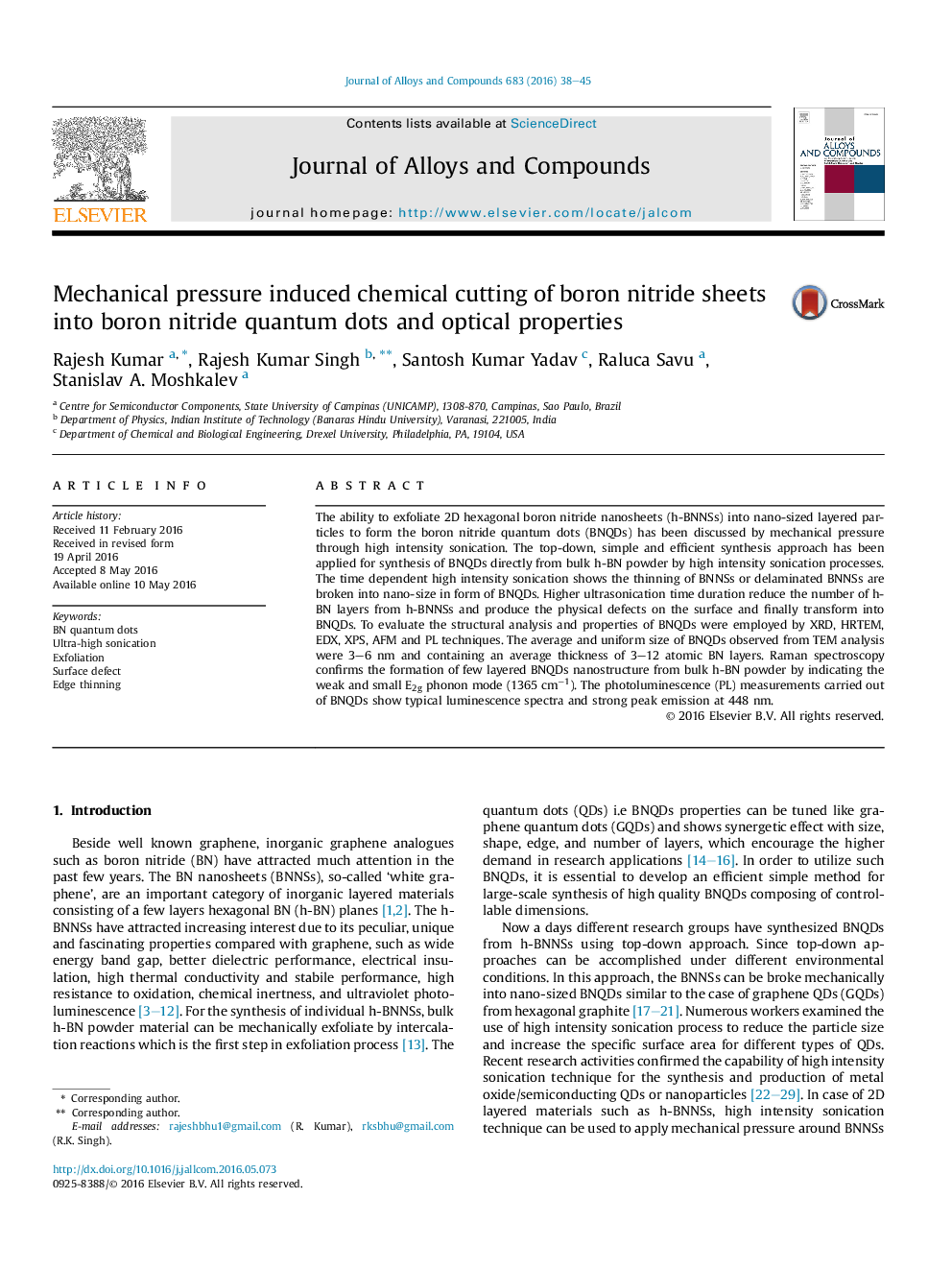| Article ID | Journal | Published Year | Pages | File Type |
|---|---|---|---|---|
| 1605435 | Journal of Alloys and Compounds | 2016 | 8 Pages |
Abstract
The ability to exfoliate 2D hexagonal boron nitride nanosheets (h-BNNSs) into nano-sized layered particles to form the boron nitride quantum dots (BNQDs) has been discussed by mechanical pressure through high intensity sonication. The top-down, simple and efficient synthesis approach has been applied for synthesis of BNQDs directly from bulk h-BN powder by high intensity sonication processes. The time dependent high intensity sonication shows the thinning of BNNSs or delaminated BNNSs are broken into nano-size in form of BNQDs. Higher ultrasonication time duration reduce the number of h-BN layers from h-BNNSs and produce the physical defects on the surface and finally transform into BNQDs. To evaluate the structural analysis and properties of BNQDs were employed by XRD, HRTEM, EDX, XPS, AFM and PL techniques. The average and uniform size of BNQDs observed from TEM analysis were 3-6Â nm and containing an average thickness of 3-12 atomic BN layers. Raman spectroscopy confirms the formation of few layered BNQDs nanostructure from bulk h-BN powder by indicating the weak and small E2g phonon mode (1365Â cmâ1). The photoluminescence (PL) measurements carried out of BNQDs show typical luminescence spectra and strong peak emission at 448Â nm.
Keywords
Related Topics
Physical Sciences and Engineering
Materials Science
Metals and Alloys
Authors
Rajesh Kumar, Rajesh Kumar Singh, Santosh Kumar Yadav, Raluca Savu, Stanislav A. Moshkalev,
